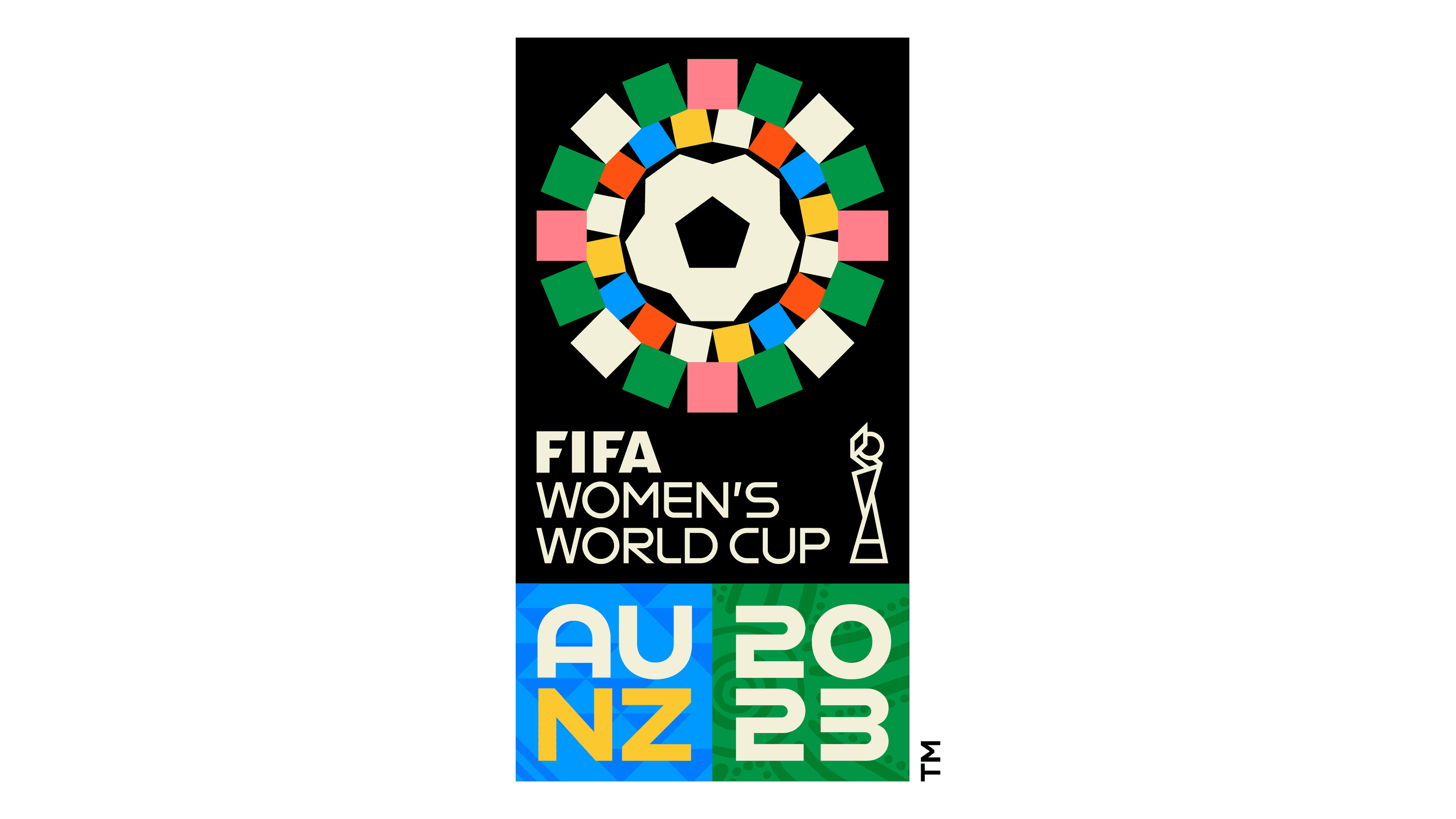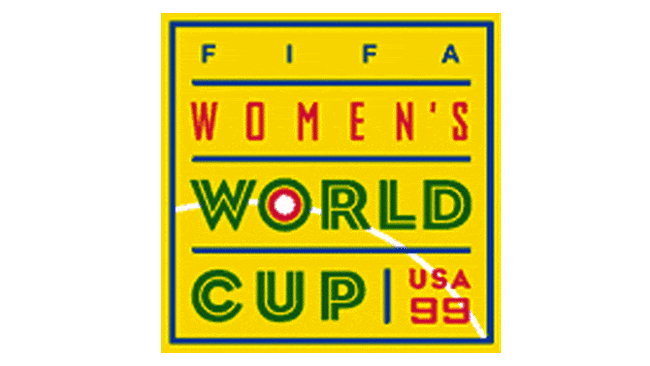FIFA Women’s World Cup Logo
Tags: competition | soccer | World Cup
Organized by FIFA (International Federation of Football Association), the Women’s World Cup is the highly anticipated international football (soccer) tournament that is the pinnacle of competition for women’s national teams around the world. Its creation in China in 1991 marked the beginning of a path to immense popularity and significance.
Meaning and history
Over the years, the Women’s World Cup has been widely recognized as teams from different countries compete at the highest level, demonstrating their talents and skills to the world. Qualifying rounds precede the final tournament, with 24 teams competing in recent editions, although past tournaments have varied in numbers.
The structure of the tournament follows that of the Men’s World Cup, including group stage matches followed by qualifying rounds leading to quarter-finals, semi-finals and a grand final. The team that wins the final match becomes the glorified champion of the Women’s World Championship.
Beyond the playing field, the Women’s World Cup has played a key role in popularizing and promoting women’s football on a global scale. It raised the profile and recognition of female athletes and played a critical role in the overall growth and development of women’s football.
This prestigious event draws the attention of a wide global audience and consistently delivers outstanding performances, unforgettable moments and impressive displays of skill and athleticism from participating teams and players. It has become a magnet for football fans around the world, acting as an inspirational force to promote women’s football on the international stage.
What is the Women’s World Cup?
Since its inception in 1991, the Women’s World Cup has remained a prestigious event in women’s football. With teams from all over the world showcasing their skills and talents on the big stage, he has captivated audiences around the world. This competition, held every four years, celebrates the best in women’s football and continues to raise the status and popularity of this sport on the global platform.
1991 – 1995
The original FIFA Women’s World Cup logo reflected its global impact with two recognizable globes representing all continents, rendered in blue with bold black outlines. The overlapping globes symbolized the unity and interconnection of nations through the universal language of football. Silhouettes of running women graced the foreground, effectively conveying the essence of teamwork and collaboration.
1995 – 1999
The emblem of the 1995 Women’s World Cup in Sweden was an abstract drawing of a female profile, accentuated by flowing hair in vibrant blues and yellows. The elegant inscription “Women’s World Cup ’95 Sweden” gracefully wraps around the woman’s head, creating a stunning semi-circle effect.
A contrasting black and white soccer ball was strategically placed in the center, blending harmoniously with the emblem’s white background. The dates of the main events, written in a soothing blue tint, found their place right below the profile, adding a touch of elegance.
1999 – 2003
The emblem for the 1999 Women’s World Cup in the United States included a bright yellow rectangle as a background, giving energy to the overall design. Boundary lines provided structure and organization to this living canvas.
Carefully placed inscriptions in various fonts and colors ensured that the main elements were clearly separated and highlighted. An abstract blue drawing of a woman running with a ball, representing the global nature of the event, adorned the right side, accompanied by a thin circle symbolizing its far-reaching impact.
2003 – 2007
Paying homage to the host country, the emblem for the 2003 Women’s World Cup in the United States was made in the colors of the American flag: black, blue, white and red. The “FIFA Women’s World Cup” lettering adorned the upper in black lettering, while the word “FIFA” was highlighted by distinctive diagonal cutouts.
The letters “USA” boldly stood out in large white sans-serif type, underlined with a thick blue outline. The year of the competition is elegantly adorned with a bright red background just below the word “USA”. An exquisite design, reminiscent of a cup with a ball on top, completed the composition.
2007 – 2011
The classic FIFA color palette of two different shades of blue adorns the “Women’s World Cup” lettering, accentuated with subtle swirling strokes, reminiscent of the artistic finesse of Chinese calligraphy. These spiral strokes, rendered in gradients of yellow and orange, surrounded the coveted trophy, proudly displaying the host country and year of the tournament.
The famous Women’s World Cup trophy is depicted in the upper right corner, representing the pinnacle of excellence and achievement.
2011 – 2015
Germany had the honor of hosting the 2011 FIFA Women’s World Cup and the logo design was similar to its predecessor. However, the Stuttgart-based advertising agency WVP replaced the sunset element with a vibrant stadium with a lush green field.
Elegant spirals adorned with red, gold and black represented the seating area, adding a touch of patriotic flair. The serene light blue sky displayed the name of the country and the year of the event in white capital letters.
2015 – 2019
The 2015 FIFA Women’s World Cup held in Canada celebrated Canadian identity through the use of a crimson gradient background and a prominent maple leaf as the centerpiece. The stylized image of three leaves symbolized various aspects of the country’s landscape, giving the logo a unique and creative look. A jumping human figure was delicately integrated into the “A” of the “Canada 2015” lettering.
2019 – 2023
The 2019 Women’s World Cup logo featured a stylized trophy surmounted by a golden soccer ball, a powerful symbol of triumph and jubilation representing the pinnacle of women’s football. Distinctive font styles add intrigue and contrast to the lettering, while “France 2019” lettering has a refined and sophisticated look that speaks to the prestige of hosting the tournament in France.
2023 – 2027
The logo for the 2023 Women’s World Cup in Australia and New Zealand featured Maori ornaments and local Australian symbols in a heartfelt tribute to both countries that celebrate their cultural heritage and contributions.
An exuberant and varied color palette of red, white, green, bright blue, pinks and orange hues created a visually captivating experience for the event, symbolizing the fusion of different cultures and the best of women’s sport.
Font
Each logo used unique typefaces to reflect the host nations, with the style of the FIFA acronym being the only consistent element. This style included sans serif uppercase letters with diagonal tips of the horizontal bars in both “F” characters.
Color
A consistent theme of the Women’s World Cup logos has been the representation of the host country through a chosen color palette, symbolizing the host country.












